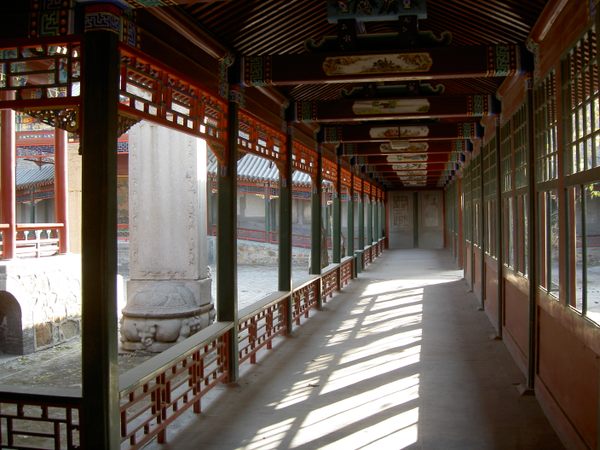A maze of halls and shrines of brightly painted deities makes up White Cloud Temple’s sprawling complex. First established during the 8th century, it was a particularly prestigious center for Taoism during the Mongol Yuan Dynasty, though most of the temple halls are the result of renovations over its lifetime.
After passing through the turnstile gates, visitors are greeted with wafts of smoke emanating from burning incense within the massive copper burners stationed outside the 19 halls. Taoist worship tools are available in various red-painted huts. For those unsure how to pray, there are large posters in Chinese illustrating the steps of proper prayer.
A stone bridge named Wofeng Bridge, meaning “to stop the wind,” can also be found near the entrance. On both sides of the bridge hang large copper coins containing a small square hole in their centers. Within the square hole hangs a bell. It is believed that if you toss a coin and it hits the bell, the following year will be filled with good luck.
The attendant deities ascend in order of rank up to the Hall of the Three Pure Ones, a second-floor shrine containing statues of Taoism’s three holiest figures, regarded as the origin of all beings. The numerous altars are tended to by Taoist monks. Their sleeping quarters are dotted throughout the complex, and they can be seen going about their day among the worshippers.
The Hall of the Jade Emperor celebrates this most famous of Taoist deities, while Taoist housewives cluster earnestly at the Hall to the God of Wealth to pray for their financial future. Young students can also be seen pleading to Lü Zu for help with passing their exams. Depictions of Taoist Hell adorn the walls of the Shrine Hall for the Saviour Worthy.
During Spring Festival, or Chinese New Year, White Cloud Temple hosts one of Beijing’s most traditional temple fairs, or miàohuì.

